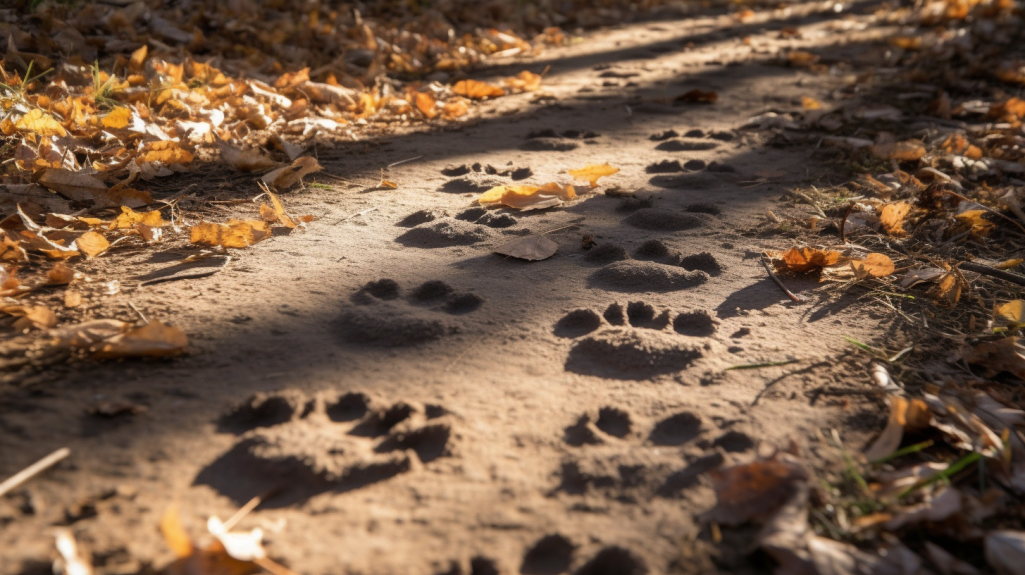Embarking on a journey into the great outdoors allows us to connect with nature on a primal level, immersing ourselves in the wonders of the wild. One captivating skill that enhances this experience is the art of tracking animal prints. Every mark left behind by a creature tells a story of its movements, behaviors, and interactions with the environment. Learning to decipher these subtle signs can transform your outdoor adventures into exhilarating quests for insight and discovery. In this guide, we’ll delve into the fascinating world of animal print tracking, offering tips and techniques to help you become a skilled wildlife detective.
The Basics of Animal Print Tracking
Tracking animal prints involves keen observation, patience, and a deep understanding of the natural world. Here are the fundamental steps to get you started:
- Choose the Right Location: Begin your tracking journey in areas where animal activity is high, such as along riverbanks, near watering holes, or in-game trails. These spots are more likely to yield fresh prints.
- Study Common Prints: Familiarize yourself with the tracks of common wildlife in your region. Start with easier-to-identify prints like deer, rabbits, and birds before progressing to more intricate tracks like those of carnivores.
- Inspect the Ground: Look for disturbed earth, imprints, and other signs of animal movement. Soft ground, mud, and sand are ideal for capturing clear tracks.
Identifying Animal Prints
Each animal’s track holds unique characteristics that can help you identify the species. Pay attention to the following features:
- Foot Shape: Observe the number of toes, their arrangement, and the overall shape of the print. For instance, hooved animals like deer leave distinctive cloven prints, while canines have paw prints with claw marks.
- Claw Marks: Some animals, like dogs and cats, have retractable claws that may or may not leave visible marks. Take note of the presence and positioning of claws.
- Stride and Gait: The distance between prints (stride) and the pattern of prints (gait) offer insights into an animal’s speed and behavior. A bounding gait could indicate playfulness, while a stalking gait might suggest hunting.
Tools of the Trade
Equipping yourself with the right tools can enhance your tracking experience:
- Field Guide: Carry a field guide or use a tracking app to help you quickly identify animal prints and gather information about the creatures that made them.
- Camera and Notebook: Document the prints you find by taking clear photographs and jotting down notes about the location, time, and any relevant details.
- Measuring Tape: A measuring tape helps you record accurate dimensions of prints, aiding in identification and differentiation.
Advanced Techniques
As you become more proficient in tracking, you can explore advanced techniques to deepen your understanding:
- Aging Prints: Learn how to differentiate between fresh and older prints by examining factors like sharpness, definition, and how well the print holds its shape.
- Tracking Patterns: Understand how animals move through their environments. Some species follow distinct patterns, such as walking along the edges of clearings or using natural obstacles as pathways.
- Interpreting Behavior: Use your knowledge of animal behavior to deduce their intentions from the prints they leave. For example, erratic prints might indicate a startled animal, while tracks leading to a water source could imply thirst.
Conclusion
Mastering the art of animal print tracking is a gratifying endeavor that opens a window into the lives of the creatures that share our world. It fosters a deep connection with nature, enabling us to read the stories imprinted on the ground beneath our feet. By honing your observation skills, studying the finer details of prints, and employing advanced techniques, you’ll evolve into a skilled wildlife detective, capable of unraveling the mysteries of the animal kingdom one print at a time. So, venture forth with curiosity and a discerning eye – the wilderness awaits, ready to divulge its secrets to those who listen to its whispers in the language of tracks.

